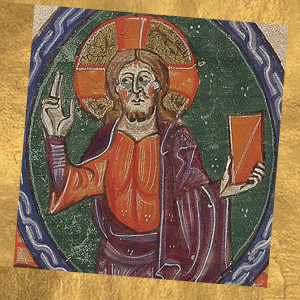St. Maximus the Confessor
The monk
In the great, imperial city of Constantinople, Maximus (born around 580), the proto-secretary of Emperor Heraclius, was a brilliant young man. He had received an excellent philosophical education and had landed one of the best civil service jobs in the Empire. Many could have envied him. But he wanted more. Not more from a worldly perspective, but more in the sight of God. He left public life and became a monk at Chrysopolis, eventually becoming the abbot there. At some point, Persian invasions forced him to flee to a different monastery at Carthage. It was at Carthage that the controversy broke out that would determine the rest of his life.
Defender of the Incarnation
There had been controversies about the Incarnation for centuries. In 325 the Council of Nicaea had been obliged to declare, against the Arians, that the Son was “begotten, not made … true God from true God.” How could a creature have saved us? In 451, the Council of Chalcedon had to declare, against other heresies, that the Son was “true God and true man … in two natures, without confusion, change, division or separation.” For if he did not assume a human nature to the full, how could human nature be divinized, or saved?
The monothelites, including Maximus’ friend Pyrrhus, reflected on Chalcedon and decided that Christ had two natures but only one, divine will. Maximus disagreed. God does not swallow up humanity, nor did his divine nature annihilate any part of human nature in the Incarnation, including the human will. That would not be love. The faculty of the will is part of nature, Maximus argued, and so Jesus Christ had two wills, a human and a divine. In Christ, God the Son became fully man, with a human body, soul and will, so that the whole human being, body, soul, and will, could live in the manner of God. At Gethsemane, the divine will struggled with the human will in Christ to show us that a human will finds its full realization – its full freedom – in an act of loving, free union with God.
In 645, Maximus made his way to Rome, where he participated in the Lateran Council of 649, condemning monothelitism. Emperor Constans II, a monothelite, noticed. First Pope Martin I, whom Maximus had helped at the Council, was arrested, then Maximus. Thus began the transformation of the monk into “the Confessor.”
“Confessor”
The monk who had given all his energy to articulating the faith of the Church was brought to Constantinople and tried as a heretic. For several years, the now elderly man was sent into exile. In 662, at the age of 82, he was tried again. The monothelite political authorities could no longer tolerate the brilliance of his speech or of his writing. They cut out the old man’s tongue and mutilated his right hand so that he could no longer write or speak, convinced that in so doing they had silenced this witness to the orthodox and apostolic faith.
What they failed to realize is that a confessor of the faith confesses that faith not only with his words, but with his whole being. And so this mute old man, missing a hand, became a living word. His silence was more powerful than any letter he had written or speech he had given, confessing his and the Church’s faith in the Incarnation of God’s Son.
Maximus was exiled to present-day Georgia. Exhausted by the torture he had suffered, he died that same year. The Third Council of Constantinople (680-681) vindicated both him and Pope St. Martin I, declaring monothelitism a heresy. He is the last person whom both the Catholic and the Orthodox Churches recognize as a Father of the Church, those early, great saint-theologians who laid the groundwork for the faith of the entire People of God.







